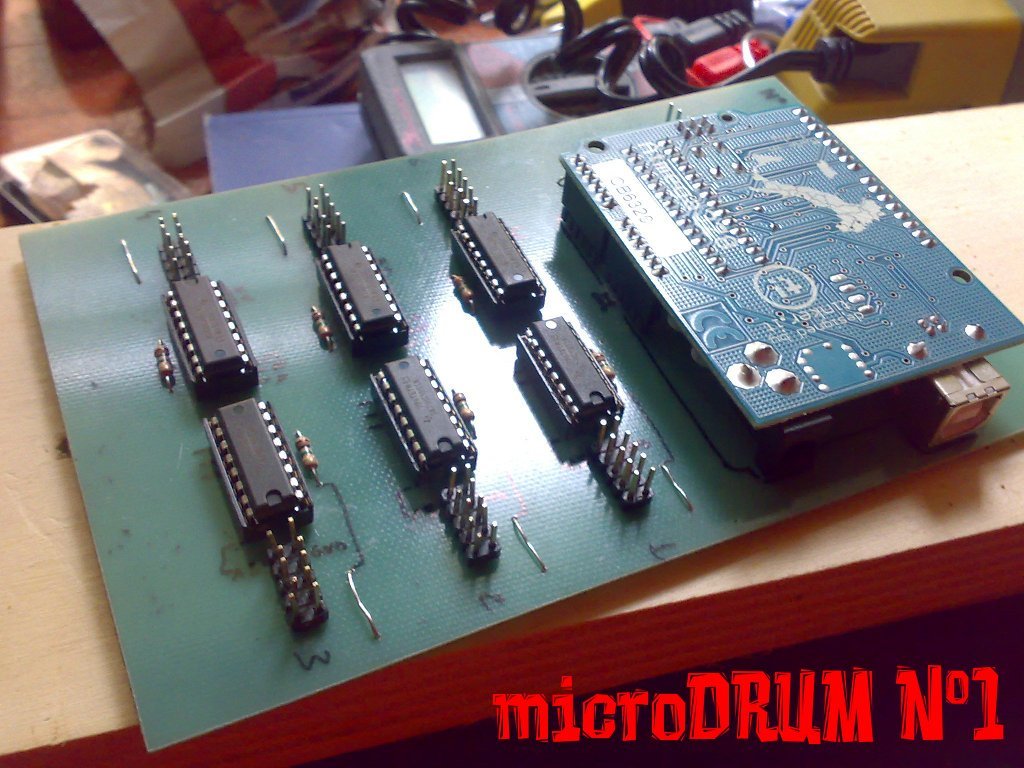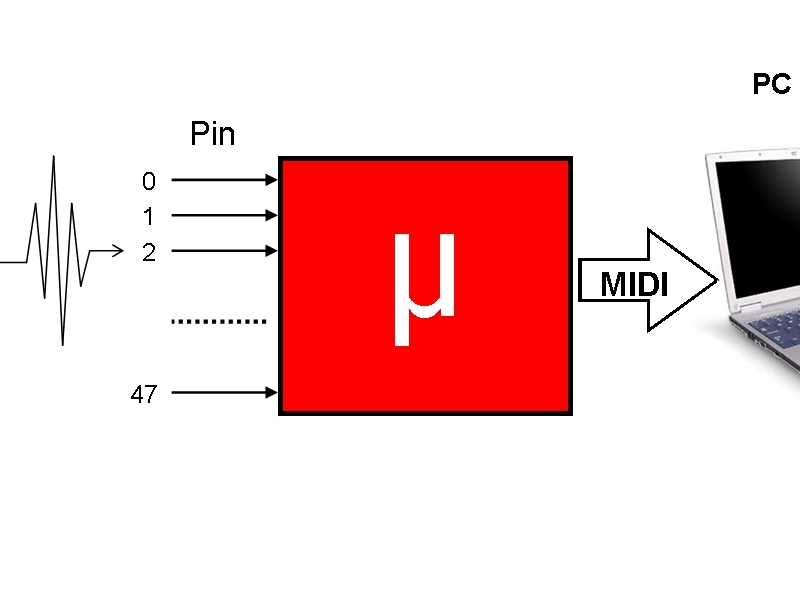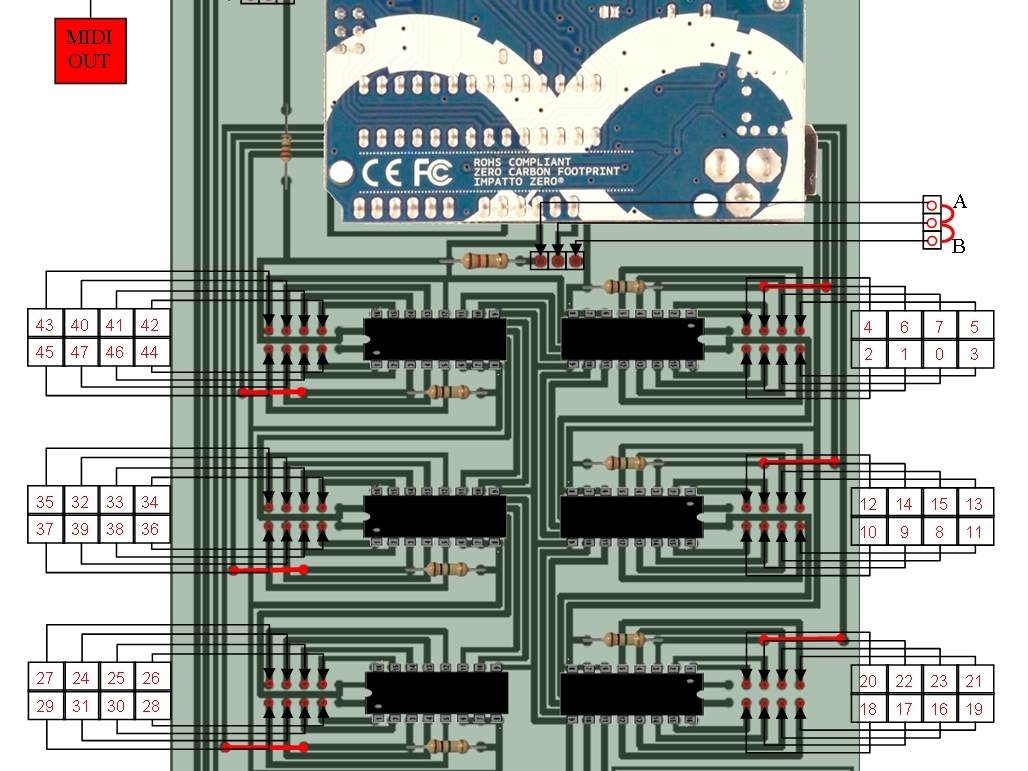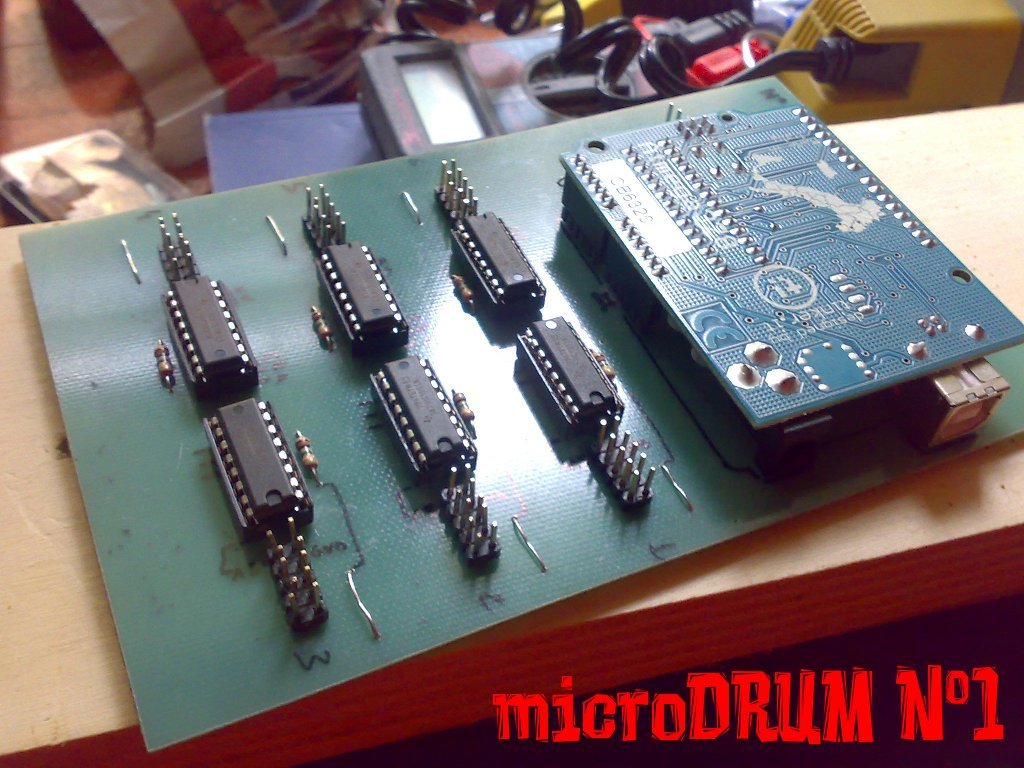The microDRUM is a Trigger-to-MIDI controller. In practice, as shown in the drawing, it transforms the impulses generated by the pad (or cymbal) into a MIDI note.
The idea behind the microDRUM is to create opportunities for anyone to build a drum machine in an economical way. To do this the heart of microDRUM is an Arduino. The microDRUM features:
48 trigger inputs
MIDI out port
USB port (which allows the user to manage the controller and update the firmware)
Customizable settings to eliminate multiple-trigger, cross-talk, etc.
Supports most types of switch or variable HiHat controllers with CC position or dedicated notes on all zones for 6 levels of intermediate levels of the pedal positions
Save settings









